Patrick Ewing should not be the head basketball coach at Georgetown University next season, and it is almost irresponsible to suggest otherwise.
Before I get into anything, I just want to make a couple things clear. For one, this article does not reflect the views of Thompson’s Towel, the Georgetown student body, or even the chaos that is Hoya Twitter. These views are my own, and should be treated as such.
Second, Patrick Ewing is a legend. Ewing has played an integral role in Georgetown basketball for the past four decades. He was a catalyst for John Thompson’s vision on the Hilltop, bringing the Hoyas their first (and only) national championship, and cementing their place on the national stage. Ewing’s career as a player at Georgetown went down as one of the greatest four years from a college basketball player ever, and there is no doubt in my mind that Georgetown would not be anywhere near what it became in the following years without him. Patrick Ewing is the embodiment of what it means to be a Hoya, and nothing will ever change that.
That being said, it’s time to move on.
The Hoyas are bad: like, really bad. Georgetown is 6-16 with no Big East wins. They’ve already played 11 conference games. That is already the eighth worst start in Big East history, and the worst in school history. At the moment, Kenpom has Georgetown at a 25.6% chance to finish the year winless, which, statistically speaking, is absurdly high considering there are at least nine games left in the season. If the Hoyas lose out and finish 0-19 in the conference, that would take the lone spot for worst Big East record, which is currently held by the ‘09 DePaul squad and the 1993 Miami Hurricanes, both of whom finished 0-18. Georgetown fan Matthew Morrow pointed out on Twitter that Patrick Ewing only lost 23 games as a player on the Hilltop, and if Georgetown loses out, they will have lost 24 this year alone.
Even if Georgetown doesn’t lose out, this season will still go down as one of the worst in program history. Kenpom currently has Georgetown ranked 205th in the country out of 358 Division 1 men’s college basketball teams. To put that in perspective, the worst the Hoyas have ever finished since Kenpom was introduced in 2002 is 124th in 2004, which was Craig Esherick’s final season. Even in JTIII’s final season at the helm, the Hoyas finished statistically ranked 69th in the country. These seasons were both considered failures and resulted in the termination of their respective coach’s contracts, but how do they stack up against Ewing’s tenure as a whole?
During Ewing’s five years coaching the Hoyas, Georgetown’s peak end-of-season Kenpom ranking was 63rd, which came in, you guessed it, 2021. The Hoyas were actually ranked 54th in the nation following their unforgettable Big East Tournament run, but after their abysmal performance against Colorado in the NCAA tournament, they dropped nine places in the algorithm. Starting from Ewing’s first year in 2018, Georgetown has finished the season ranked at 94th, 100th, 67th, and 63rd in Kenpom’s end-of-season rankings. Currently, Georgetown is ranked at 206th this season. That is a tremendous drop off. Right when we thought Ewing was going to turn things around for the program, the Hoyas have fallen below any point that I thought was possible. There are a lot of reasons for this, and Coach Ewing is not to be blamed for all of them, but it can and probably should start with him. So, how did things go so wrong this year for the reigning Big East Tournament champions?
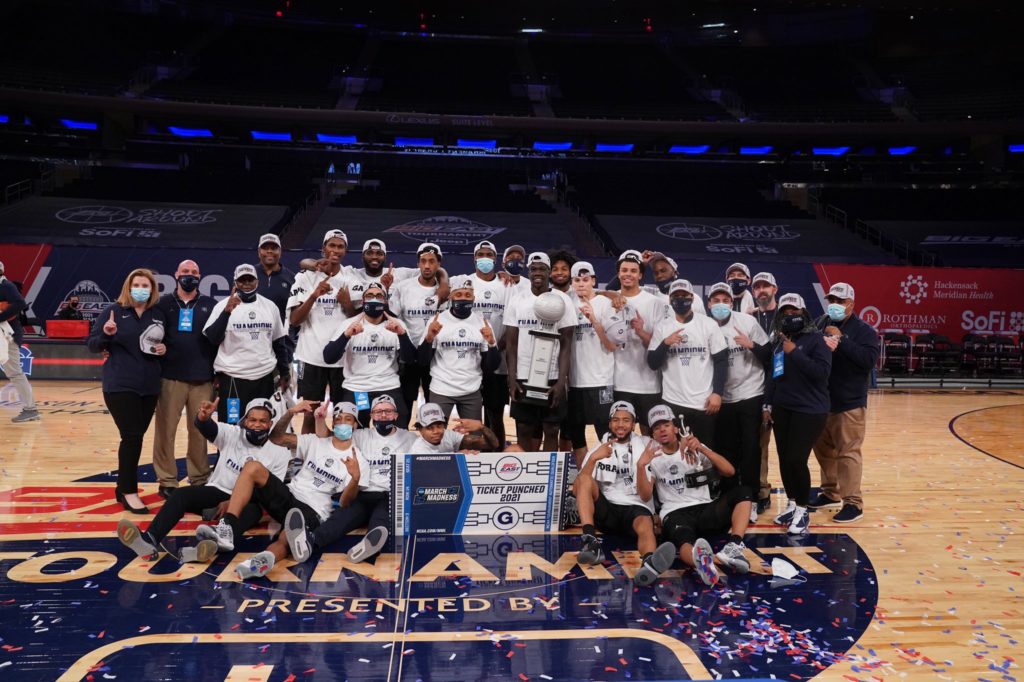
To start with, this year’s Georgetown team was not at all what Ewing had envisioned it would be four years ago. This was supposed to be the squad with senior year Mac McClung (now in the G-League after transferring to Texas Tech), James Akinjo (now the starting Point Guard for reigning national champions Baylor after transferring to Arizona), Josh LeBlanc (now a role player for a surprisingly strong UAB team after transferring to LSU), and a statement junior year from Qudus Wahab (who is now a role player for Maryland). Doesn’t it sound crazy to even think about a universe where this actually could have happened?
While player transfers and dismissals are not always due to coaching, it has been an undeniable theme during Ewing’s reign. Since 2018, the Hoyas have seen 10 (!!) players transfer and three more dismissed from the team. Again, not all of these were completely basketball decisions, but you have to wonder why Ewing has struggled to retain a steady roster, especially this season after his team had just won a conference tournament.
The transfer of Qudus Wahab, who left the Hilltop for DMV rival Maryland, remains one of the more puzzling in recent history. Wahab was a top contributor for the Hoyas in his final season on the Hilltop and was set to play a major role for Georgetown for the rest of his college career. But, to nearly everyone’s surprise, he left. In a postgame interview from the 2021 Big East Tournament, Ewing had this to say about Wahab: “To me, by the time he leaves here—whenever that is, hopefully it’s two more years—he’s going to be the best big in the country.”
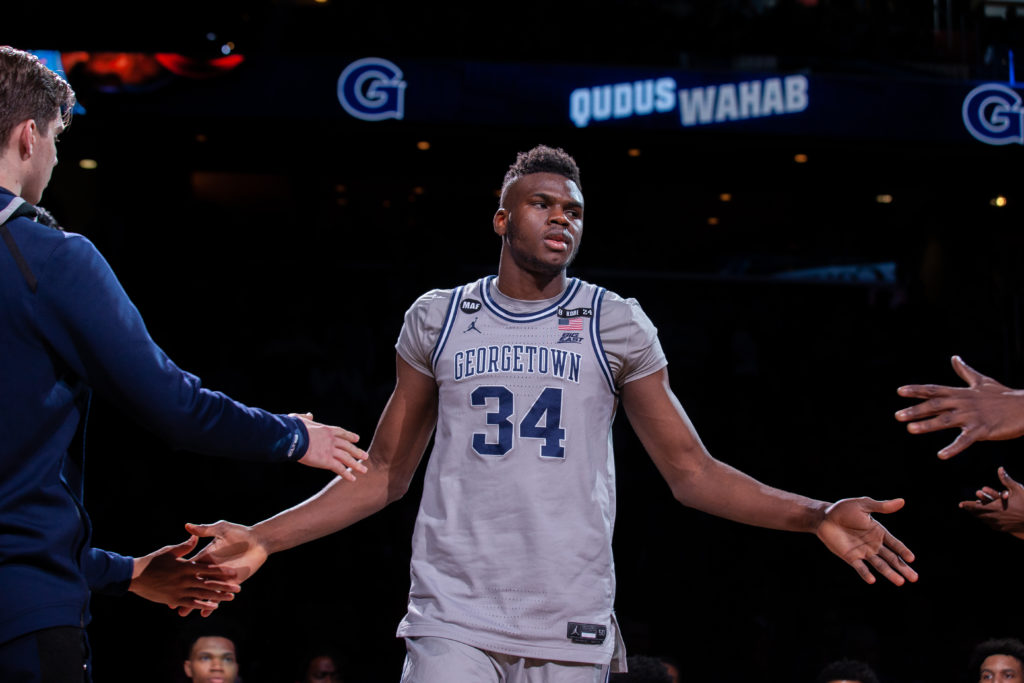
None of that would end up happening. Why was Coach Ewing, one of the greatest centers in the history of the game, unable to keep one of his core players? No one really knows for sure, but Wahab’s decision significantly hurt both Georgetown and his own career. Wahab now only plays in roughly half of all the games for the Terps, who fired their longtime head coach Mark Turgeon earlier this year. Turgeon’s firing, by the way, took a lot less to do than what it has—or hasn’t— taken Georgetown to do.
Ewing also lost freshmen TJ Berger and Jamari Sibley over the summer to the transfer portal, but those made a little more sense, as they both had trouble getting quality minutes for the Hoyas in their first season. Other notable departures (which were expected) included Jamorko Pickett, Chudier Bile, and Jahvon Blair, but the staff had worked to fill the void. They had a top-15 recruiting class coming in and college-established transfers in F/C Tre King and wing Kaiden Rice. Again, though, this wouldn’t go completely according to plan.
Just weeks before the season began, the school announced that Tre King had been dismissed from the team and would be transferring. King averaged nearly a double-double at EKU a year ago and was expected to bring tenacity on both offense and defense in the paint for Georgetown; he was expected to be a go-to guy for the Hoyas. But just like so many players under Ewing, he was gone, this time before he even put on the blue and gray.
Once the beginning of the new season finally rolled around, people were expecting Georgetown to yet another rebuilding year, for like the 4th year in a row. Even the majority of the Thompson’s Towel staff predicted that the Hoyas would finish at the bottom of the Big East. We knew they weren’t gonna be great, but we (or at least I) didn’t think they were gonna be THIS bad.
I had the pleasure of covering the season opener versus Dartmouth and honestly, I was pretty damn excited. Capital One was rocking, and the student section was full on both sides. Even though it was Georgetown playing Dartmouth, students were excited to see Dante Harris and Don Carey continue to perform how they had left off last season. They wanted to see the exciting freshmen prospects in 5-star Aminu Mohamed and 4-star Ryan Mutombo. They wanted to come back from a year off campus to see a team of young Hoyas make some noise, but that would not be the case. Georgetown was upset by a then-289th Kenpom ranked Dartmouth squad, which was their worst loss in years. It set the tone for the year.
You could almost see it coming from the Dartmouth game, though. Ewing looked like he had no idea what rotations he wanted out on the court and players looked disoriented on both offense and defense. While Coach Ewing has had a little more time to figure out his rotations, that has felt like the only improvement since the opening game. Per Kenpom, the Hoyas are ranked as the 148th most efficient offense in the country and the 251st most efficient defense in the country. Both of those would be the lowest in either category for Georgetown in the past 17 years. That is unacceptable.
Outside of last season, Ewing’s Georgetown teams have struggled on the defensive end of the court. In his five seasons so far, the Hoyas have ranked 119th, 133rd, 125th, 49th, and now 252nd. Coming off of their best defensive season under Ewing, the Hoyas have fallen to their worst ranking in Georgetown’s Kenpom history. Anyone who has watched the Hoyas this year can see why they’re ranked that low, too. Opposing players are consistently left open on the wings for three, centers aren’t going up strong to contest layups and grab rebounds, and overall, the players look lost. While part of this is on some of the players for not giving maximum effort, a lot of it is on the coaching.
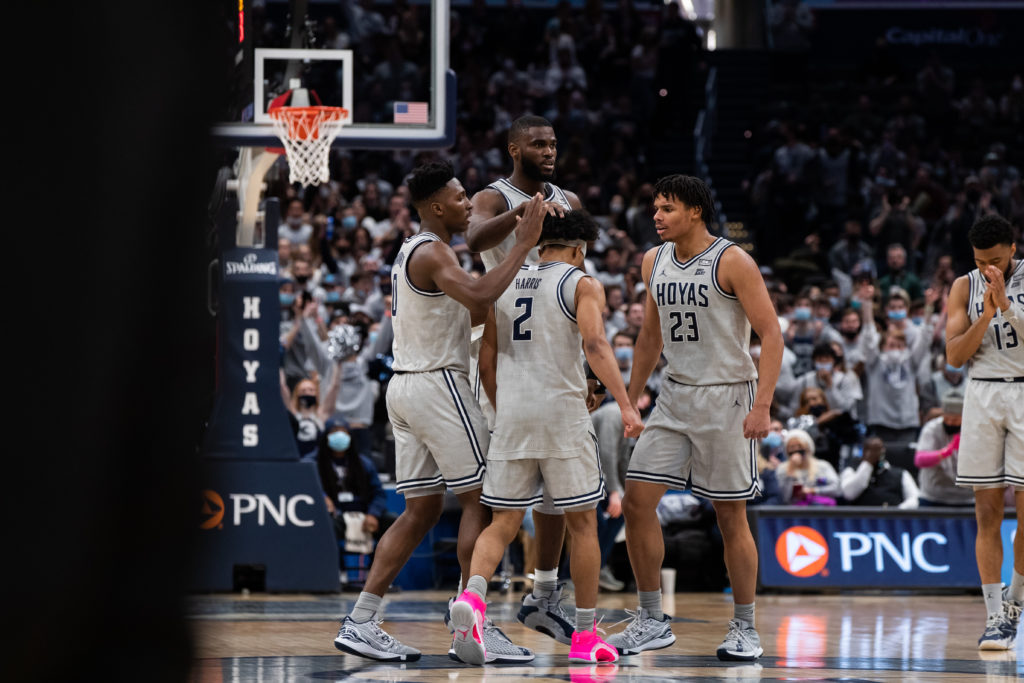
Coach Ewing has struggled to find a defensive identity for his team. This season, it seems the staff has emphasized over-helping to prevent easy layups. This over-helping scheme typically leaves players open on the wing as the defense collapses into the paint. It works fairly well when teams aren’t shooting well, but unfortunately they have been against the Hoyas. Teams are shooting an average of 36.4% from behind-the-arc against Georgetown. This puts the Hoyas as the 313th best three-point defense in the country.
One might ask, “Well maybe that’s because teams aren’t really taking threes against Georgetown at a high rate?” Unfortunately, it is the opposite: opposing teams and coaches have recognized and exploited this over-helping scheme. 36.1% of the points the Hoyas have allowed thus far have come from three-pointers, which is 50th highest in the country (the average is 31.6%). 41.2% of field goal attempts from Georgetown opponents have been from behind-the-arc, which is 280th in the country (the average is 38.0%). Three-point defense has been a persistent issue during the Ewing years, and in a modern era where the three-point shot is becoming more and more prevalent, why hasn’t he been able to address it?
While the defense has been bad, the offense hasn’t been much better. To the naked eye, it seems that the Hoyas rely on players to create their own points; there is no chemistry. While part of that may be due to the fact that the team is young, it shouldn’t be as much of an issue four months into the season. Unfortunately, the stats back up the iso-ball claims: Georgetown ranks 215th in assists as a proportion of field goals made. So often it feels like Dante Harris is taking a contested mid-range jumper off the dribble, or Aminu is spinning into oblivion, or Kaiden is taking a quickfire three-pointer no matter how far behind the line he is. The team looks as if they’re five guys who had just met each other and were placed on the same team at your local Planet Fitness. There is no identity.
Looking at the offensive numbers, there is a clear strength and an even more clear weakness. Georgetown shoots 36.6% from behind the arc, which is 45th best in the country (the team’s highest ranked percentage of any metric in Kenpom). On the contrary, they only shoot 43.5% on two-point field goal attempts. This is 344th in the country. Out of 358 division 1 teams. There is only a 6.9% difference between shooting a three-pointer and point-pointer for Georgetown, which, according to CBB statistician Erik Haslam, would be one of the smallest gaps of such since the 2014-15 season.
Mathematically, it seems that Georgetown should be taking more threes than twos, but again it seems as if the staff has been unable to recognize this. Only 35.9% of Georgetown’s field goal attempts are coming from three, which is 226th in the country. This team lacks a lot of things, but solid three point shooting is not one of them. Three players (Don Carey, Kaiden Rice, and Collin Holloway) are shooting at least 40% from deep, all of whom shoot at a relatively high volume. Even Aminu Mohammed is shooting 33% from three on 42 attempts. If the Hoyas have three-point shooters, why aren’t they taking more? While a small part of the blame can be placed on the players for choosing not to shoot, it ultimately comes down to Coach Ewing for not building an offense around his team’s strengths.
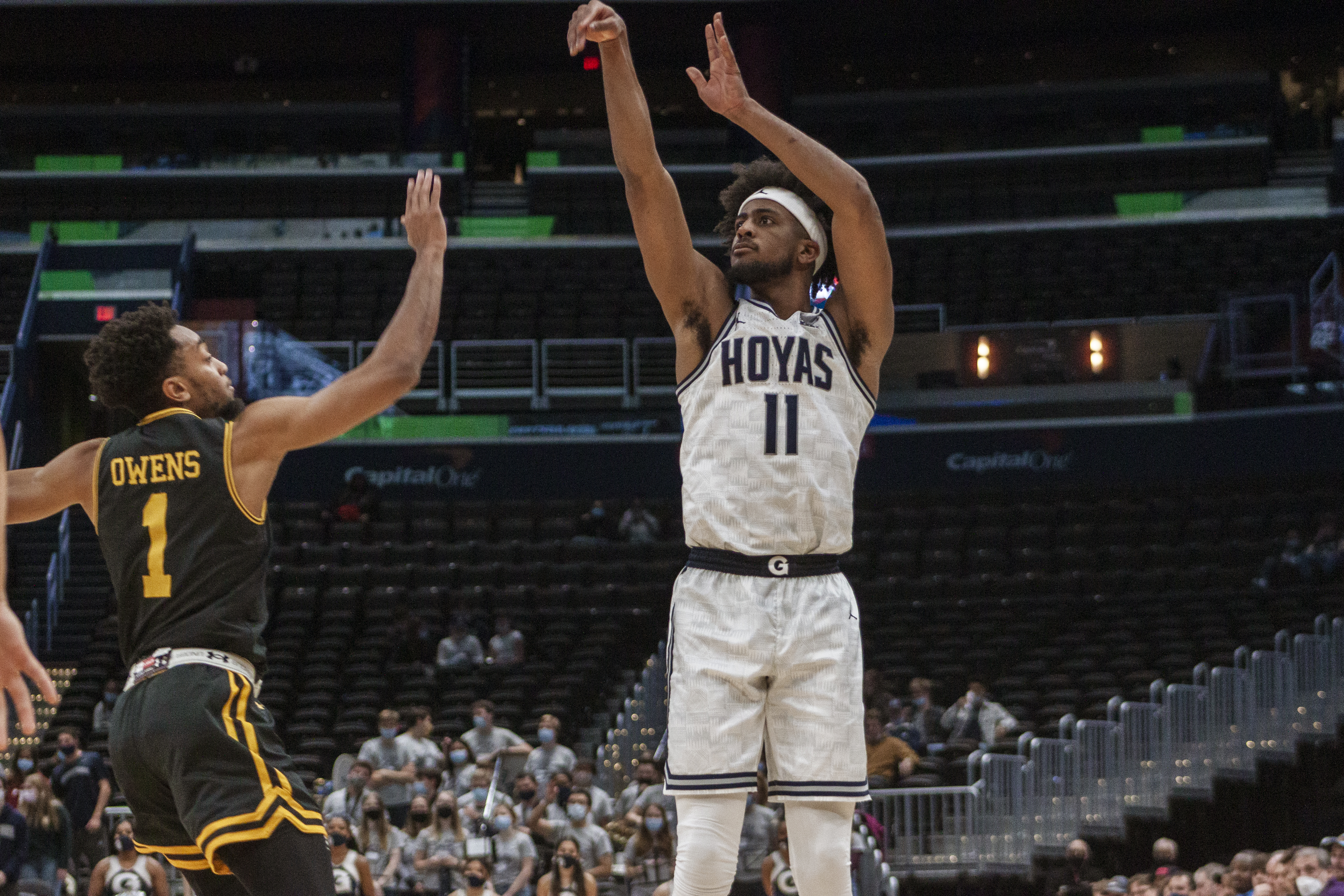
I get it though, it’s definitely a challenge to have to organize a completely new set of guys almost every year. But as I said before, part of the reason that the program is in these situations is because of the staff’s inability to retain talent. Attracting that talent, though, is a different story. Ewing and his staff have been able to bring in quality recruits, the most recent ones being incoming sharpshooting guard Denver Anglin and freak athlete D’Ante Bass. The issue is that of the 11 players Ewing recruited in his first three seasons, only four of them have graduated or are on pace to graduate from Georgetown. I understand that if Coach Ewing’s contract is terminated it’s possible that more will be on their way out, but that’s a discussion to be had later.
Like any Georgetown fan, all I want is to see this program succeed. I want the players to succeed. I want the coaches to succeed. And that can’t happen without winning games. We, as fans, should not accept this mediocrity. Coach Ewing has had five years to turn this program around, and it’s looking like that it may take more than five more years for him to do just that, if ever.
Don’t get me wrong, I really wanted the Ewing hire to work out. Like I said before, he is the embodiment of what it means to be a Hoya and it pains me to see our legend struggle to bring his program back to what it once was. There is no reason for a school that spends as much money as Georgetown does on basketball to continue to perform at such a subpar level. A fair amount of the fanbase—while surely less than a few months ago—has been asking for him to receive more time, and I truly hate to say this, but enough is enough: Patrick Ewing’s time as Georgetown’s head coach must come to an end.
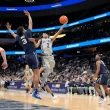
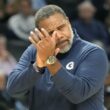
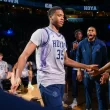
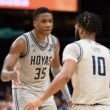
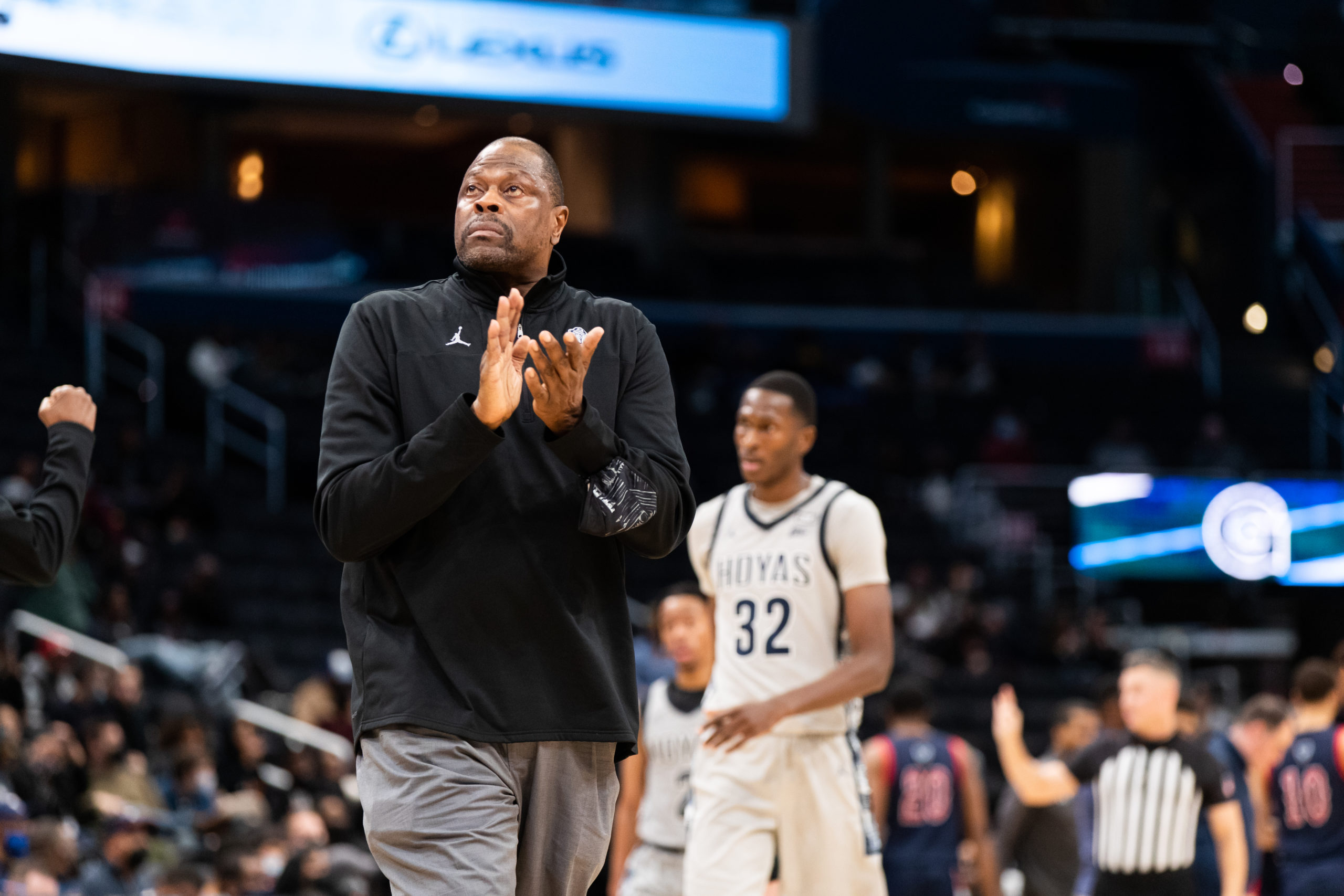
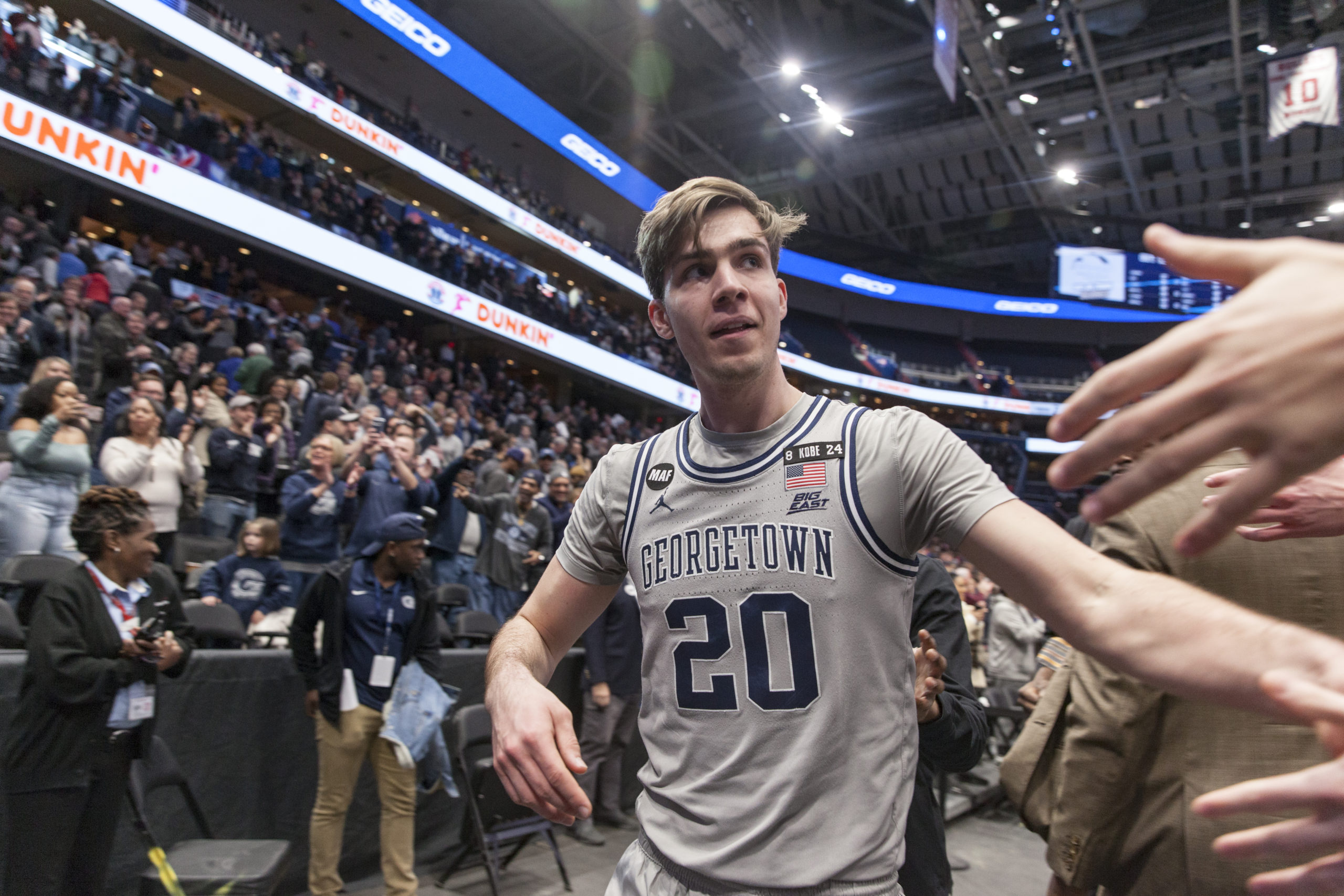
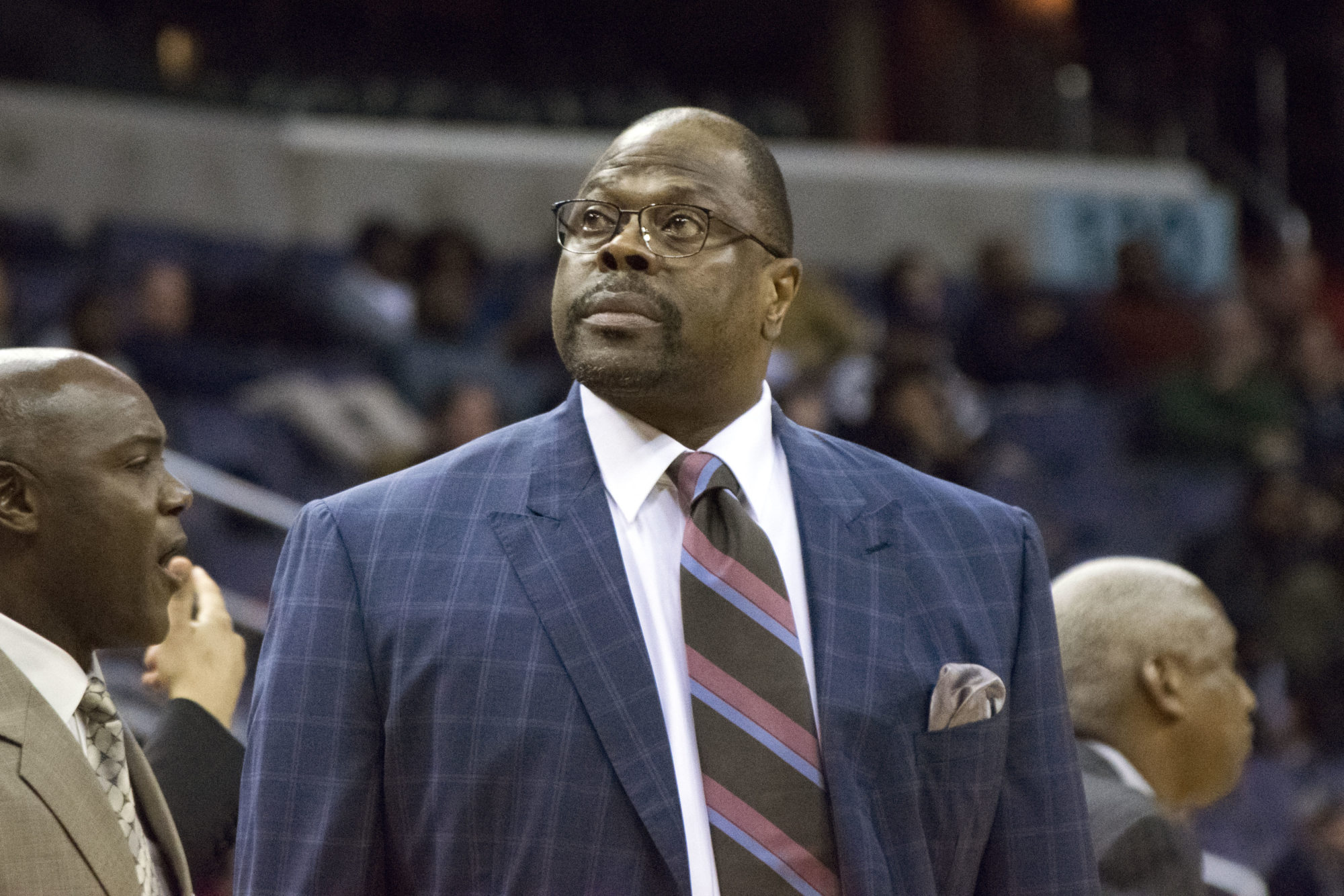
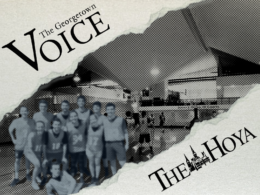
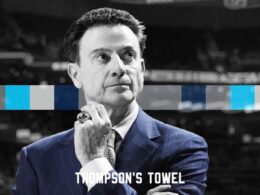
Great article. Georgetown’s lack of defensive intensity and subpar offensive sets have been the death of them this season. It truly has been embarrassing to watch. Ewing’s time needs to come to an end even if it is at the expense of player stability and decent recruiting classes for the next 5 years.